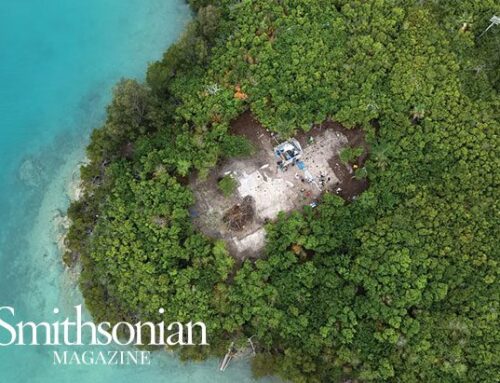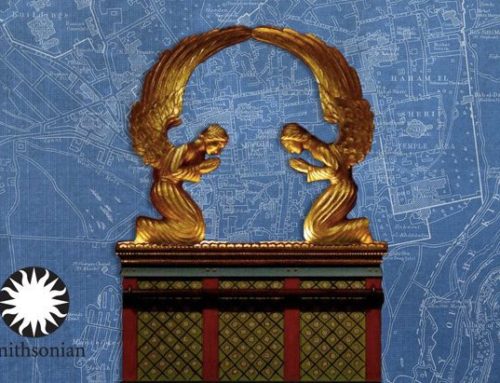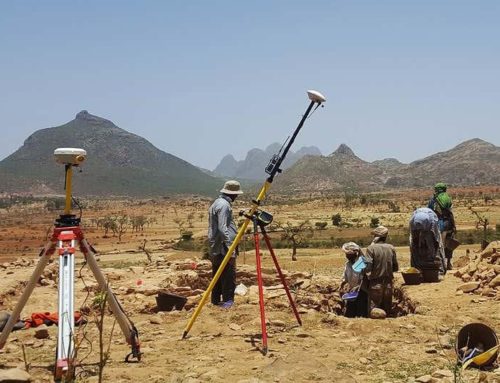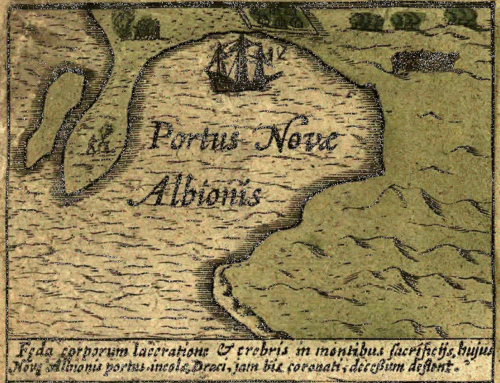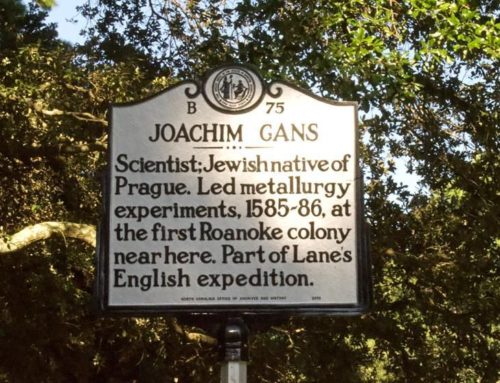After more than 400 years, a fort built by conquistadors in the Carolinas has finally been found
In the foothills of the Appalachians, I park in a cornfield just off an unmarked dirt road. A canvas canopy is the only structure visible in the quiet valley, where two dozen archaeologists and community college students are braving the July sun in loamy trenches. The team is uncovering the ruins of Fort San Juan, the oldest known European settlement in the interior of the United States.
The fort, five miles north of Morganton, North Carolina, was part of Spain’s attempt in the 1560s to extend its domination of the Americas north into what is now the southeastern United States. Until now its location was only hypothesized.
Archaeologist David Moore, a lanky transplant from California who has acquired a courtly North Carolina accent, first came to this site in 1986. He was interested in the history of Native Americans in the region. A century earlier, a Smithsonian scientist had documented an Indian mound here, so Moore thought it would be a good place to look. During a few weeks of digging, he found plentiful evidence of a large and vibrant 16th-century Indian town, including one particularly intriguing find—an iron knife of European origin. Moore assumed that the knife, which would have been extremely valuable to the Natives, made its way to the village through trade with Spanish explorers or later English settlers.
The Spanish conquistador Hernando de Soto had made a foray into this area in the 1540s. Two decades later, a more obscure conquistador, Juan Pardo, had established a series of forts here. Arriving in 1566 in Santa Elena, the would-be Spanish capital of continental America on what is now Parris Island, South Carolina, Pardo was ordered by the governor to secure the interior, scout out sources of gold and silver, and find a route to the silver mines of central Mexico.
Pardo marched off with 125 soldiers and founded Fort San Juan next to a town called Joara, established by the Catawba tribe (or perhaps its ancestors). He left 30 men at the fort when he returned to Santa Elena to fend off an anticipated attack by the French, whose fort the Spanish had recently burned down. In the fall of 1567, Pardo returned to the interior, traveling in what is now Tennessee, North Carolina and South Carolina, and built more forts to serve as supply posts on the way back to Santa Elena. Fort San Juan lasted no more than 18 months, until the Catawba burned it down. Only one soldier survived to tell the story. Native antipathy toward the Spaniards, inadequate food supplies and the swampy location of Santa Elena forced the overstretched Spanish Empire to abandon its attempt to colonize the region two decades later.
In January 1994, a 25-year-old archaeologist named Robin Beck and his brother, Kevin, were poking around the site that Moore had studied several years earlier. Their aunt and uncle, Pat and James Berry, own the land. As a kid Robin had collected Indian ceramics and arrowheads here, carefully storing the artifacts; as a teenager he had watched Moore dig. On that winter day, however, Robin found not Indian relics but pieces of grayish European pottery, and Kevin found an old nail; both turned out to be of Spanish origin. Robin Beck rushed to see Moore, a professor at Warren Wilson College in nearby Asheville. Moore excitedly pulled out pieces of the same type of pottery. (Moore had been told by other experts, mistakenly, that the pottery was made by 18th-century settlers.) It was then that Beck and Moore realized that the fragments could have come from the long-lost Fort San Juan.
Beck, now a visiting professor of anthropology at Northwestern University, recalls that he was eager to announce they had found the fort on his family’s land. Moore was also convinced they’d found the fort, but he argued that they needed more evidence before making such a bold claim. The objects, after all, might have been traded to Indians who lived at or near the site.
Moore, Beck and a third colleague, Christopher Rodning, now at Tulane University in New Orleans, set out to gather more data. They discovered the remains of five large burned buildings next to the Indian mound, providing dramatic evidence of a fort that had come to a fiery end.
By the end of the 2004 field season, the researchers had uncovered a large section of one of those buildings. In style it resembled a Catawba dwelling, but at 25 feet long, it was built on a European scale. Blackened dirt and ashen remains of the wooden posts that supported the structure are as vivid as a campfire put out yesterday. The team found roof beams that had collapsed inward during the fire and benches with their cane matting still intact. Perched on a bench was an Indian pipe. Nearby were two fragments of chain mail. The site was undisturbed, “almost as if it was ritually covered” by Natives eager to erase any trace of the invaders, says Moore.
Moore and his two colleagues have a paid staff of six and an enthusiastic volunteer workforce of more than two dozen. The excavation has a familial feel; Rodning’s mother churns out pizzas and pies for the hungry group. The archaeologists are trying to extend that communal feeling by opening the excavation to the public during a summer weekend, an event that draws hundreds of the curious, including members of the Catawba Nation, who may be descendants of the Joara villagers.
During a lunch break at the site, Moore brings out the precious artifacts—nails, lead shot and a small piece of majolica from a 16th-century medicine jar. He notes that such materials were not trade items; nails were exceedingly rare in Spanish inventories in the New World, and guns and ammunition too precious to part with.
 |
| Archaeologists (Digging at Fort San Juan) ARE Trying to learn what went wrong between the Spanish and the Indians before the fort burned |
Moore adds that it will take years to uncover the other buildings, determine the extent of the Indian town, and piece together the intriguing story of the interactions between the Spanish and the Indians. Though it is clear the Spanish made themselves unwelcome in the end, the relationship appears to have been peaceful in the beginning. The very site of the Spanish compound—abutting the Indian mound—signals cordial relations, and the architecture of the fort strongly hints at a collaborative construction effort in the early days.
Archaeologists have so far failed to find evidence of any of the other Spanish forts that, according to expedition accounts, conquistadors built in the interior in the mid-1500s. Their remains may be lost forever, along with the innumerable Native mounds that have been plowed under in the Carolinas. For now, Moore is still giddy at his and his colleague’s luck in stumbling on this evidence of the Spanish Empire’s brief foothold.
